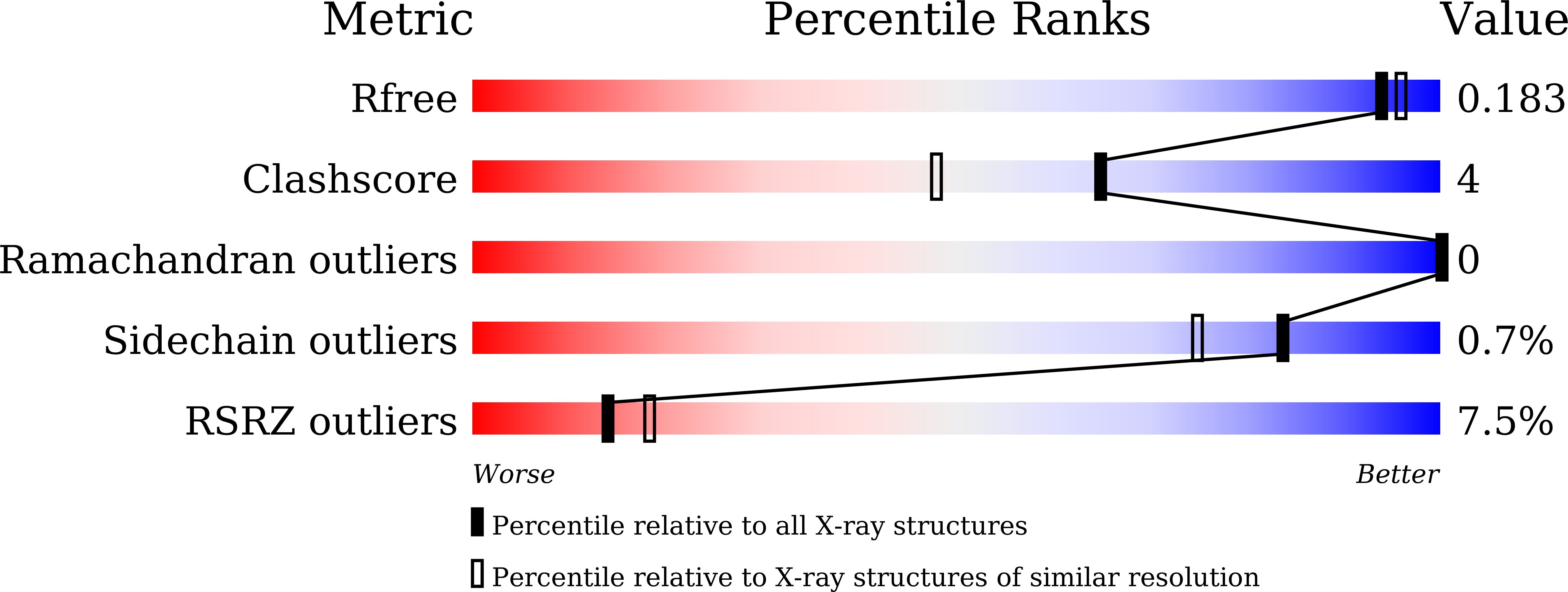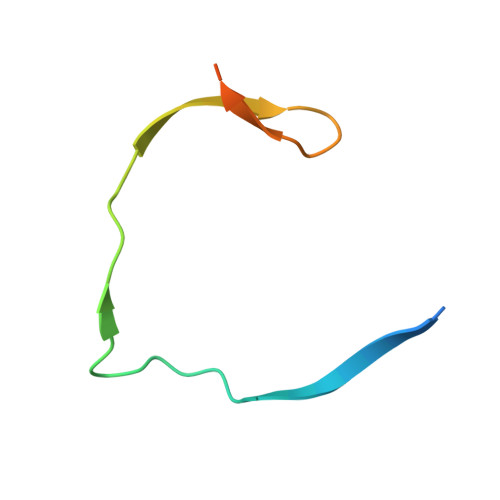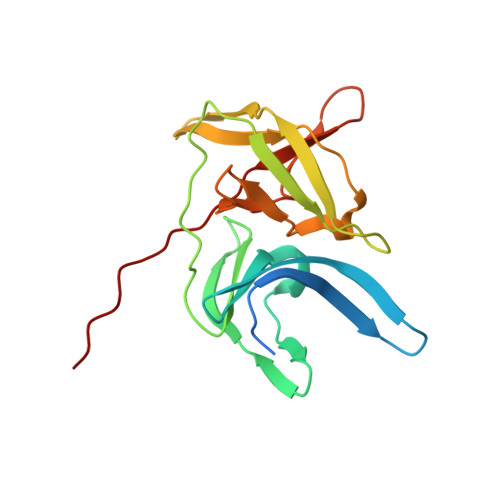Structure-Based Macrocyclization of Substrate Analogue NS2B-NS3 Protease Inhibitors of Zika, West Nile and Dengue viruses.
Braun, N.J., Quek, J.P., Huber, S., Kouretova, J., Rogge, D., Lang-Henkel, H., Cheong, E.Z.K., Chew, B.L.A., Heine, A., Luo, D., Steinmetzer, T.(2020) ChemMedChem 15: 1439-1452
- PubMed: 32501637
- DOI: https://doi.org/10.1002/cmdc.202000237
- Primary Citation of Related Structures:
6KK2, 6KK3, 6KK4, 6KK5, 6KK6, 6KPQ, 6Y3B - PubMed Abstract:
A series of cyclic active-site-directed inhibitors of the NS2B-NS3 proteases from Zika (ZIKV), West Nile (WNV), and dengue-4 (DENV4) viruses has been designed. The most potent compounds contain a reversely incorporated d-lysine residue in the P1 position. Its side chain is connected to the P2 backbone, its ¦Á-amino group is converted into a guanidine to interact with the conserved Asp129 side chain in the S1 pocket, and its C terminus is connected to the P3 residue via different linker segments. The most potent compounds inhibit the ZIKV protease with K i values <5?nM. Crystal structures of seven ZIKV protease inhibitor complexes were determined to support the inhibitor design. All the cyclic compounds possess high selectivity against trypsin-like serine proteases and furin-like proprotein convertases. Both WNV and DENV4 proteases are inhibited less efficiently. Nonetheless, similar structure-activity relationships were observed for these enzymes, thus suggesting their potential application as pan-flaviviral protease inhibitors.
Organizational Affiliation:
Institute of Pharmaceutical Chemistry, Philipps University, Marbacher Weg 6, 35032, Marburg, Germany.

















